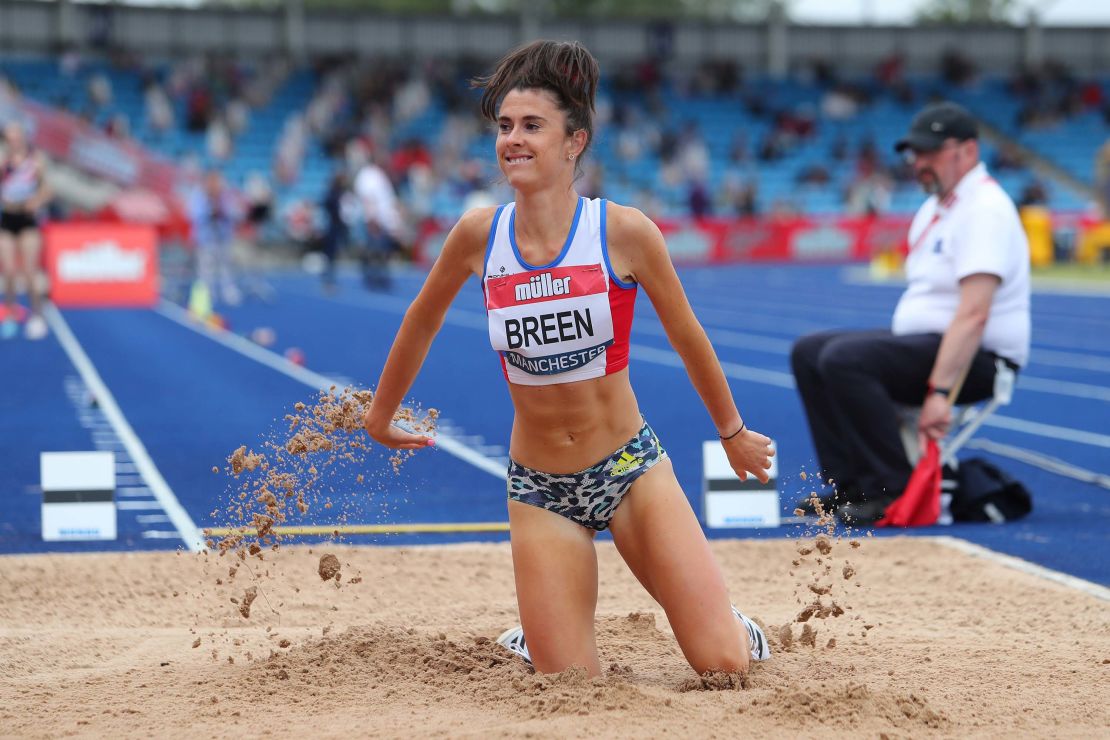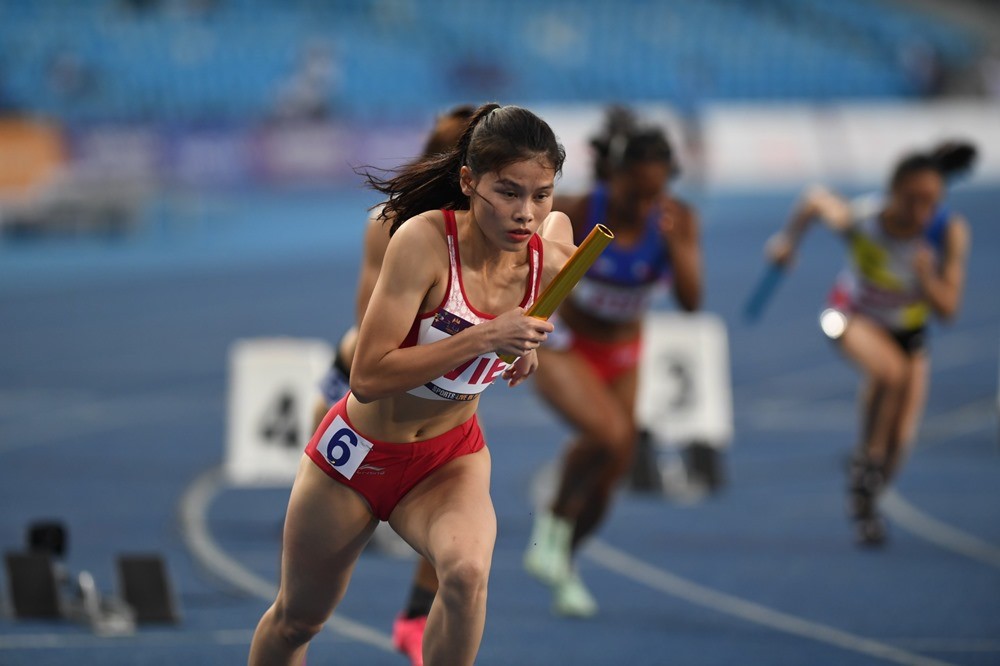Women’s athletics, also known as women’s sports, have been gaining traction and recognition over the years. From being excluded in the Olympics until 1900 to now having equal representation in major sporting events, women’s athletics have come a long way in terms of acceptance and empowerment. Despite this progress, there are still challenges and barriers that women face in the world of sports. In this article, we will delve into the history, current state, and future of women’s athletics, and how it serves as a platform for empowering women.
The History of Women’s Athletics
Women have been participating in physical activities and sports since ancient times. In ancient Greece, women were not allowed to participate in the Olympic games, and married women were even prohibited from attending. However, there were some exceptions such as the Heraean Games, a festival held in honor of the goddess Hera, where unmarried women could compete in running events. Similarly, in ancient Rome, women were allowed to take part in physical activities such as horseback riding and archery.

During ancient Greece, women were barred from competing in the Olympic games, and married women faced additional restrictions that prevented them from attending
Women’s Role in Ancient Times
In many ancient civilizations, women’s roles were often limited to household duties and child-rearing, with little to no opportunities for education or participation in activities outside of their homes. This was largely due to societal norms and expectations that placed a greater emphasis on women’s appearance and domestic responsibilities rather than their physical abilities and intellectual capabilities. In these patriarchal societies, sports were seen as a masculine pursuit and women who engaged in physical activities were considered unladylike.
Despite these barriers and limitations, there were remarkable examples of women defying societal norms and excelling in sports. One notable figure is the ancient Greek runner, Kyniska, who became the first woman to win an Olympic event in 396 BCE. She achieved this feat by entering her team of horses in the four-horse chariot race, a primarily male-dominated event. Her victory sparked controversy and criticism, but it also challenged the notion that women were physically inferior to men.
The Rise of Modern Women’s Sports
The late 19th century saw a shift towards the acceptance of women participating in sports. This was due in part to the rise of the suffragette movement, which fought for women’s rights and equality. Women began forming athletic clubs and organizations, and in 1896, the International Olympic Committee (IOC) announced that women would be allowed to participate in the Olympics for the first time in the 1900 Paris Games.
Despite this progress, women still faced significant obstacles in participating in sports. They were limited to “feminine” sports such as tennis and figure skating and had to adhere to strict dress codes that often hindered their performance. However, these early pioneers paved the way for future generations of female athletes.
Gender Discrimination in Early Women’s Athletics
The early days of women’s sports were marred by gender discrimination and inequality. In 1900, only 22 out of 997 athletes at the Paris Olympics were women. This was largely due to the lack of events available for women to compete in. It wasn’t until the 1928 Amsterdam Games that women had more opportunities to participate, with the addition of six track and field events. However, this also sparked controversy as many believed that women were not physically capable of competing in long-distance races.
Furthermore, women still faced discrimination in terms of access to training facilities and resources. Female athletes were expected to train in inferior conditions compared to their male counterparts, and often had to rely on fundraising and donations to cover their expenses. This lack of support and recognition for women’s sports contributed to the slow progress in achieving gender equality in women’s athletics.
Challenges Faced by Women in Sports
Despite significant strides in the acceptance and recognition of women’s sports, there are still many challenges that women face in the world of the women’s athletics. These challenges range from issues of pay and media coverage to societal stereotypes and expectations.

Although there have been notable advances in the acceptance and acknowledgment of women’s sports, there remain numerous challenges that women encounter in the realm of the women’s athletics
Gender Pay Gap in Women’s Sports
One of the most pressing challenges for women’s athletics is the gender pay gap. Women athletes earn significantly less than their male counterparts, even when they are performing at the same level or have achieved similar accomplishments. According to a study by the Women’s Sports Foundation, the average salary for professional female tennis players in 2020 was $166,000, while male players earned an average of $278,000. The discrepancy is even larger in team sports, with female soccer players earning 38 cents for every dollar earned by male players.
This gender pay gap not only affects professional athletes but also trickles down to lower levels of competition. Many women’s sports teams struggle to secure funding and resources, making it difficult for them to develop and compete at the same level as men’s teams. This disparity not only has financial implications but also sends a message that women’s sports are less valuable and important than men’s.
Lack of Media Coverage
Another significant challenge faced by women in sports is the lack of media coverage. Despite the increase in female participation and success in sports, women’s even and leagues still receive significantly less media coverage compared to men’s. A study by the Tucker Center for Research on Girls and Women in Sport found that in college sports, men’s teams received an average of 60% more media coverage than women’s teams. This disparity is even more evident in professional sports, where female athletes receive less than 5% of all sports media coverage.
This lack of media coverage not only affects the visibility and recognition of female athletes but also translates to fewer opportunities for sponsorship and endorsement deals. It also perpetuates the notion that women’s sports are less entertaining and marketable than men’s, leading to further inequality in terms of support and resources.
Societal Stereotypes and Expectations
Women’s athletics also face societal stereotypes and expectations that can be detrimental to their success. There is a pervasive belief that women are physically weaker and less capable than men, and therefore, cannot perform at the same level. This mindset often leads to unfair comparisons between male and female athletes and underestimates women’s abilities.
Moreover, society tends to put pressure on female athletes to conform to traditional gender roles and expectations. Women are expected to be feminine and maintain certain physical appearances, which can be contradictory to the muscular and athletic build required for sports. This pressure can result in body image issues and can hinder women from reaching their full potential in sports.
Access to Resources and Facilities
Women’s athletics also face challenges in terms of access to resources and facilities. Many female athletes do not have the same resources and support systems as their male counterparts, making it difficult for them to train and compete at a high level. This lack of access can be due to financial constraints, as well as societal barriers such as gender discrimination and lack of representation in decision-making positions.
Limited access to training facilities and equipment also hinders the development and improvement of female athletes. In some cases, women have to compete for time and space with male athletes, which can affect their training and performance. Moreover, female athletes often have to deal with inadequate or insufficient equipment that is designed for men, which can lead to injuries and setbacks.
Breakthroughs and Milestones for Women’s Athletics
Despite the challenges and obstacles faced by women in sports, there have been significant breakthroughs and milestones that have helped pave the way for gender equality. Here are some notable achievements that have made an impact on women’s athletics.

Despite the difficulties women in sports encounter, there have been significant achievements and milestones that have contributed to advancing gender equality
Title IX and its Impact on women’s athletics
Title IX, passed in 1972, is a federal law in the United States that prohibits sex discrimination in education programs and activities that receive federal funding. While it applies to all aspects of education, Title IX has had a significant impact on the progress of women’s sports. It has led to an increase in opportunities for female athletes, as schools and universities were required to provide equal opportunities and resources for both men’s and women’s teams.
This legislation has had a profound effect on women’s sports participation and success. Since the implementation of Title IX, there has been a significant increase in the number of girls and women participating in sports at all levels, from recreational to elite. According to the National Federation of State High School Associations, the number of girls participating in high school sports has grown from 295,000 to over 3.4 million since 1971.
First Female Athletes in Male-Dominated Sports
There have been many trailblazing women who have broken barriers and shattered stereotypes by competing in traditionally male-dominated sports. In 1971, Billie Jean King defeated Bobby Riggs in a highly publicized tennis match, which was seen as a victory for women’s rights and equality in sports. Similarly, in 1982, Julie Krone became the first female jockey to win a Triple Crown race when she won the Belmont Stakes aboard Colonial Affair.
In recent years, we have seen more and more women making their mark in male-dominated sports such as basketball, football, and wrestling. Becky Hammon made history in 2014 when she became the first full-time female assistant coach in the NBA. In 2020, Sarah Fuller became the first woman to play and score in a Power Five Conference college football game. These achievements not only inspire other women to break into these sports but also challenge societal norms and expectations.
Representation in Major Sporting Events
The inclusion and representation of women in major sporting events have also been significant milestones in the progress of women’s athletics. The Olympics have been at the forefront of this change, with the number of women participating gradually increasing over the years. In the 2016 Rio de Janeiro Olympics, women made up 45% of all athletes, compared to just 24% in the 1984 Los Angeles Games.
Furthermore, the introduction of new events and disciplines has provided more opportunities for women to compete. In 2012, women’s boxing was added to the Olympic program, making it the first sport to include both male and female events. In 2020, skateboarding, surfing, and sport climbing were introduced, with equal representation of men and women in each discipline. This progress not only serves as a step towards gender equality in sports but also showcases the diversity and inclusivity of the Olympics.
The Importance of Women’s Athletics in Empowering Women
Women’s athletics have a significant impact on the lives of women, not just in terms of physical health but also in promoting empowerment and personal development. Here are some ways in which women’s sports play a crucial role in empowering women.
Promoting Physical and Mental Well-Being
Participating in sports has numerous physical benefits, such as improving cardiovascular health, building strength and endurance, and maintaining a healthy weight. However, for women, these benefits go beyond the physical. Sports can help women develop a positive body image and self-esteem, which is especially important in a society that often places a premium on women’s appearance.
Moreover, sports have been shown to have a positive impact on mental health. Exercise releases endorphins, which can improve mood and reduce stress and anxiety. Women who participate in sports report feeling more confident and less anxious about their bodies. It also provides an outlet for stress relief, allowing women to focus on something other than their daily responsibilities and challenges.
Building Confidence and Self-Esteem
One of the most significant impacts of women’s athletics is its ability to build confidence and self-esteem. Through sports, women are able to see the results of their hard work and dedication, which can boost their self-belief and sense of accomplishment. This is especially important for girls, who are often discouraged from participating in sports due to societal norms and expectations.
Furthermore, competing in sports also teaches valuable lessons in resilience and perseverance. Women learn how to handle setbacks and failures, and bounce back stronger. This resilience and determination translate into other aspects of life, helping women face challenges with confidence and determination.
Teaching Valuable Life Lessons and Skills
Sports are not just about winning or losing; it is also about learning valuable life lessons and skills that can be applied in all aspects of life. Through sports, women learn the importance of teamwork and communication, as well as how to handle conflict and differences. They also learn how to set goals and work towards achieving them, which is a crucial skill in personal and professional development.
Participating in sports also teaches discipline and time management. With busy training schedules and balancing school or work commitments, female athletes learn how to prioritize and manage their time effectively. This is a valuable skill that can help women in their future pursuits, whether it be in their careers or personal lives.
Encouraging Leadership and Teamwork
Women’s athletics also provide opportunities for leadership and teamwork. In a team setting, women learn how to communicate effectively, make decisions, and take on leadership roles. This not only helps them develop important skills but also challenges gender stereotypes that portray women as passive and submissive.
Moreover, women in sports often serve as role models and mentors for younger girls and women. This promotes a sense of community and support within the sports world, and encourages more girls to get involved in sports. Female coaches and trainers are also essential in providing representation and guidance for young girls who aspire to be athletes.
The Future of Women’s Athletics
While there has been significant progress in women’s athletics, there is still much work to be done in terms of achieving full gender equality. Here are some factors that will shape the future of women’s sports.
Progress and Success in Closing the Gender Gap
The continued success and achievements of female athletes have played a crucial role in closing the gender gap in sports. As more women break barriers and achieve milestones, it inspires and motivates others to do the same. This progress is evident in the increasing number of girls and women participating in sports at all levels, as well as the recognition and acceptance of women’s sports in major events.
Moreover, the changing attitudes towards women’s sports have led to increased investment and support, which will help to further close the gender gap. More and more companies are sponsoring female athletes and teams, and providing resources and facilities for women’s sports. This not only provides opportunities for women but also contributes to the growth and development of sports as a whole.
Potential Changes and Innovations in Women’s Sports
The future of women’s sports may also see changes and innovations that will continue to break barriers and challenge traditional norms. With advancements in technology, we may see new opportunities and events for women in sports. For example, the introduction of mixed-gender events in the Olympics, such as the mixed 4x100m medley relay in swimming, could pave the way for more co-ed competitions in the future.
There has also been an increase in the popularity and coverage of women’s sports, particularly in traditionally male-dominated sports such as soccer and basketball. This trend is expected to continue, and with it, we may see more investment in women’s leagues and teams. This could lead to better pay, resources, and recognition for female athletes, which will contribute to the overall growth and success of women’s sports.
Continuing Challenges and How to Address Them
Despite the progress and potential for the future, there are still challenges that need to be addressed in order to achieve full equality in women’s athletics. As mentioned earlier, the gender pay gap and lack of media coverage are significant issues that need to be tackled. It will require a collective effort from sports organizations, media outlets, and society as a whole to address these issues and provide equal opportunities and support for female athletes.
Furthermore, there is a need for continued advocacy and education on the importance and benefits of women’s sports. This includes promoting equal representation in leadership positions and decision-making roles, as well as challenging societal norms and stereotypes that hinder women’s participation in sports. By continuing to push for progress and change, we can create a more inclusive and equitable environment for women in sports.
Conclusion: The Power of Women’s Athletics in Shaping the Future
Women’s athletics have come a long way since its humble beginnings, and it continues to be a platform for empowerment, progress, and change. From breaking barriers and shattering stereotypes to promoting physical and mental well-being, sports play a crucial role in shaping the lives of women. While there are still challenges and obstacles that need to be addressed, the future is bright for women’s athletics, and it serves as an important reminder that when given equal opportunities and support, women can achieve great things in the world of sports.








